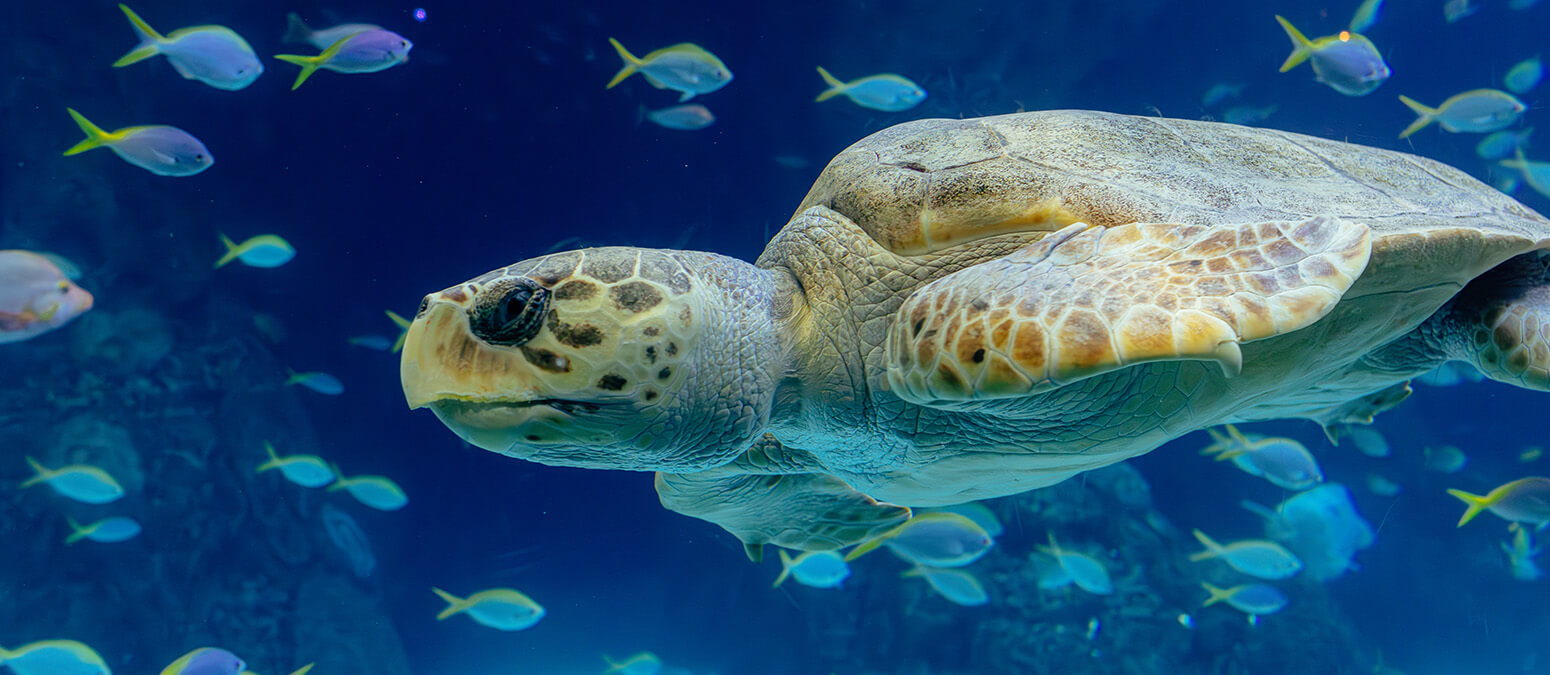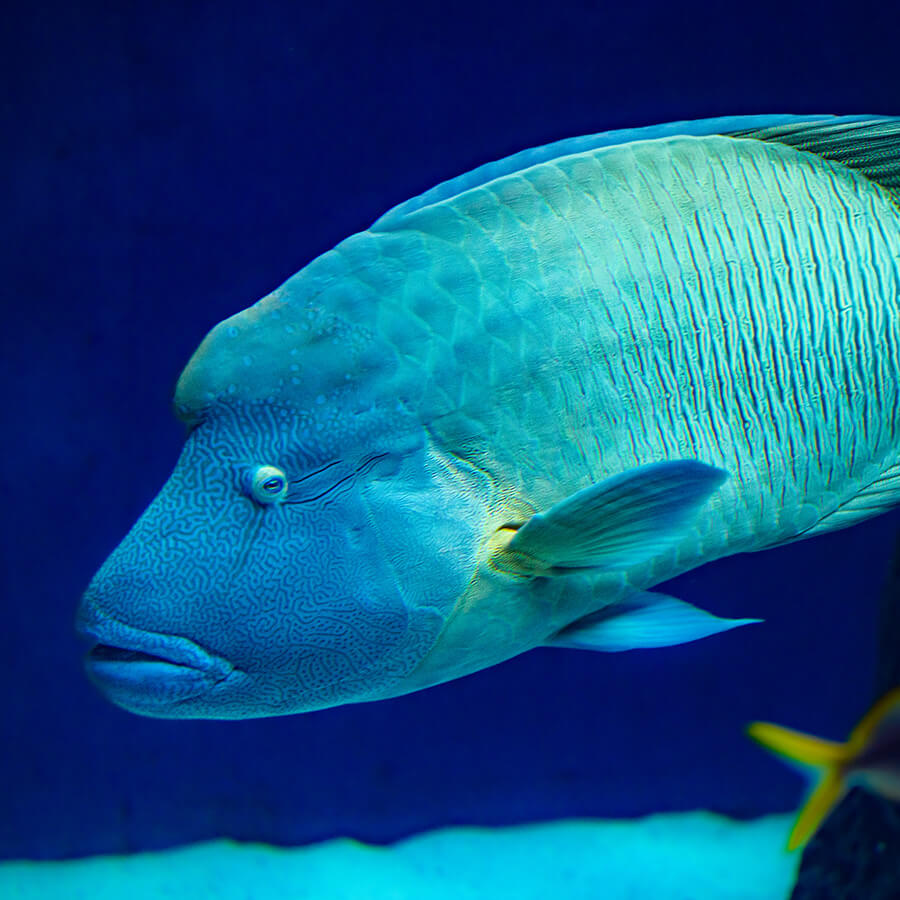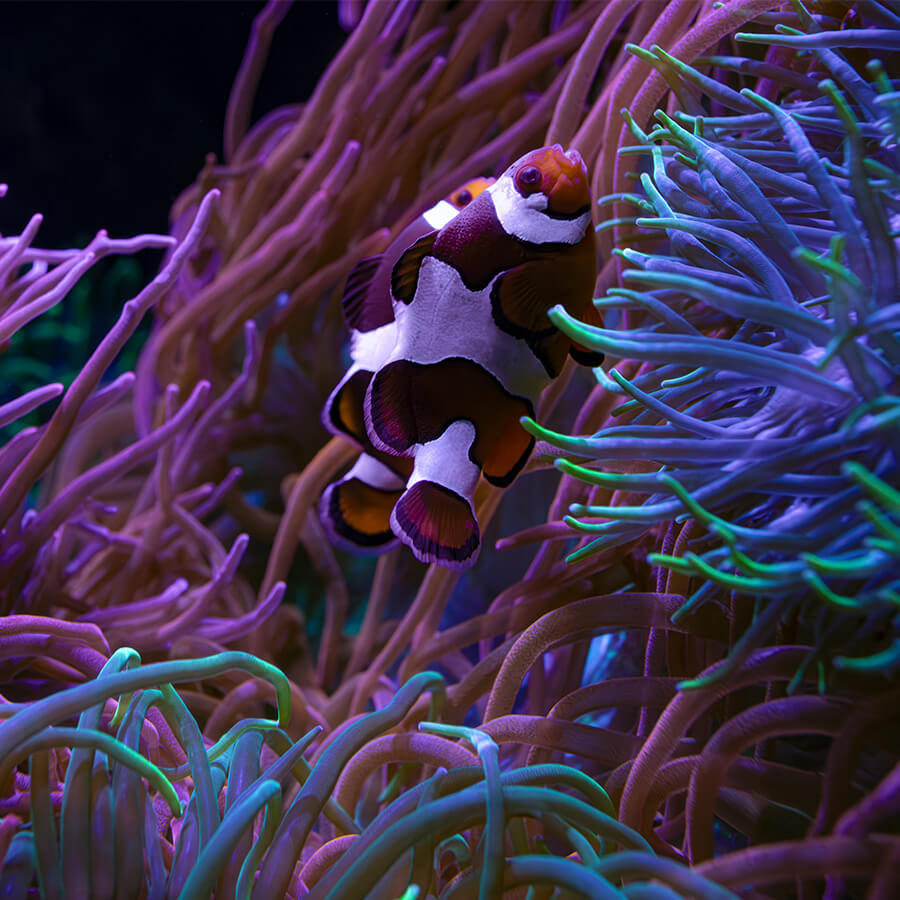
Animal Spotlight
Loggerhead Sea Turtle
Caretta caretta
Tiny Hatchlings to Ocean Giants
From 2-inch, 1-ounce hatchlings to adults averaging 250 pounds and 3 feet in length, loggerhead sea turtles can live to be over 70 to 80 years. Named for their large heads, they have powerful jaws that help them feed on hard-shelled prey. Unlike most land turtles, sea turtles can’t tuck their heads and limbs into their shells.
Equipped with excellent underwater vision and a strong sense of smell, loggerheads can hold their breath for 20-45 minutes while active, and 4-7 hours when asleep. About 90% of their nesting in Florida occurs between April and September, when females return to the beaches, producing up to 120 eggs per nest. Though they face threats from fishing nets, habitat loss, and illegal harvesting, they’re protected by state and federal regulations.
Meet the Neighbors
Our loggerhead sea turtle shares its habitat in the Heart of the Sea with a Napoleon (or Māori) wrasse and is neighbors with a variety of sea life, including colorful clownfish.

Napoleon Wrasse
Also known as a humphead or Māori wrasse, the Napoleon wrasse is one of the largest reef fish in the world, but that’s not the only thing about this captivating fish that turns heads.

Clownfish
These tiny, territorial fish don’t just live in anemones, they protect their symbiotic hosts loyally, rarely straying more than 30 cm away.
Ready to Visit?
See a Napoleon wrasse, blue speckled grouper, spotted unicornfish, a loggerhead sea turtle, and more in this Indo-Pacific habitat.
